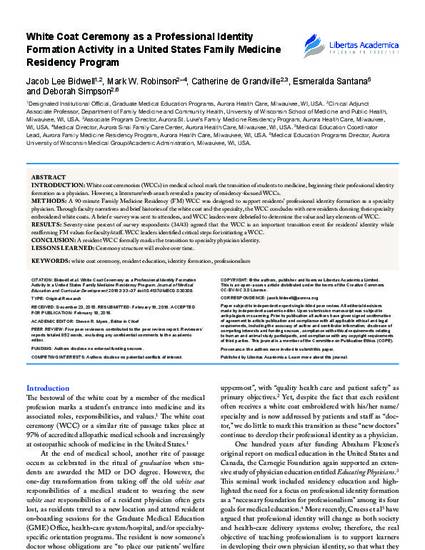
Introduction: White coat ceremonies (WCCs) in medical school mark the transition of students to medicine, beginning their professional identity formation as a physician. However, a literature/web search revealed a paucity of residency-focused WCCs.
Methods: A 90-minute Family Medicine Residency (FM) WCC was designed to support residents’ professional identity formation as a specialty physician. Through faculty narratives and brief histories of the white coat and the specialty, the WCC concludes with new residents donning their specialty embroidered white coats. A brief e-survey was sent to attendees, and WCC leaders were debriefed to determine the value and key elements of WCC.
Results: Seventy-nine percent of survey respondents (34/43) agreed that the WCC is an important transition event for residents’ identity while reaffirming FM values for faculty/staff. WCC leaders identified critical steps for initiating a WCC.
Conclusion: A resident WCC formally marks the transition to specialty physician identity.
Lessons Learned: Ceremony structure will evolve over time.
Bidwell JL, Robinson MW, de Grandville C, Santana E, Simpson D. White coat ceremony as a professional identity formation activity in a United States family medicine residency program. Journal of Medical Education and Curricular Development. 2016;3:33–37. doi:10.4137/JMECD.S30308.

Graduate Medical Education Programs, Department of Family Medicine and Community Health, Aurora St. Luke’s Family Medicine Residency Program, Aurora Sinai Family Care Center, Medical Education, Aurora Family Medicine Residency Program, Aurora University of Wisconsin Medical Group/Academic Administration